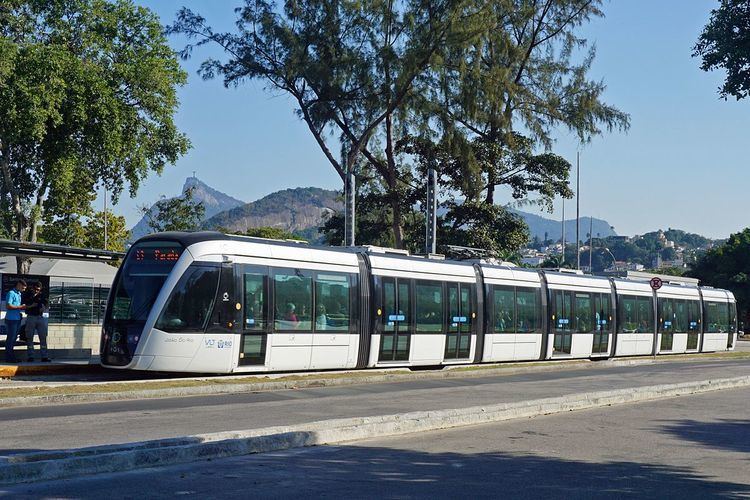Native name VLT Carioca Number of lines 3 | Transit type Light rail Number of stations 42 | |
 | ||
Rio de Janeiro Light Rail (Portuguese: VLT do Rio de Janeiro) is a modern light rail system serving Rio de Janeiro, Brazil. The system is among several new public transport developments in the region ahead of the city's successful bid for the 2016 Summer Olympics. Its official name is VLT Carioca, the initialism "VLT" (which stands for Veículo leve sobre trilhos) being equivalent to the English term light rail.
Overview
The first phase, consisting of a single 15-kilometre line between the Novo Rio Bus Terminal and Santos Dumont Airport and 18 stops, was inaugurated on 5 June 2016, two months ahead of the Olympics opening ceremony, with regular service beginning the following day. For the first month of operation, it was free of charge to ride, but only two trams were in service between noon and 15:00 on the section between Parada dos Museus in Praça Mauá and Santos Dumont Airport. The remainder of the line was opened and service was expanded to full-time operation on 12 July, although only 16 of the 18 stops on the line are in use.
The network uses 32 Alstom Citadis 402 low-floor trams carrying 420 passengers each. They are bi-directional, air-conditioned, have seven sections, and eight doors per side. The first five trams were built in Alstom's facility in La Rochelle, France, and the remaining 27 were built in Alstom's facility in Taubaté, in the state of São Paulo. The trams are the first to use a combination of ground-level power supply (APS) and on-board supercapacitor energy storage (SRS) to eliminate overhead lines along the entire route.
The remainder of the three-line, 28-km network will open in stages by the end of 2017. It is estimated that when the entire network is at full capacity, it would be able to eliminate 60% of buses and 15% of automobile traffic circulating in the city centre.
